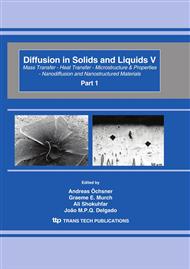p.695
p.702
p.708
p.715
p.722
p.728
p.733
p.739
p.745
Hydrogen Diffusivity and Hydride Formation in Rich-Zirconium Alloys Used in Nuclear Reactors
Abstract:
Hydrogen gas permeation tests were performed on two Nb-modified Zr alloys used in the nuclear industry. The influence of the microstructure on hydrogen diffusivity in each alloy is discussed and a mechanism of hydride formation is presented. The hydrogen binding energy for different trap sites was calculated in the M5 alloy as well as hydrogen diffusivity value in the Zirlo alloy at 300oC, D = 2.5 x 10-13 m2/s.
Info:
Periodical:
Pages:
722-727
Citation:
Online since:
April 2010
Authors:
Keywords:
Price:
Сopyright:
© 2010 Trans Tech Publications Ltd. All Rights Reserved
Share:
Citation:


